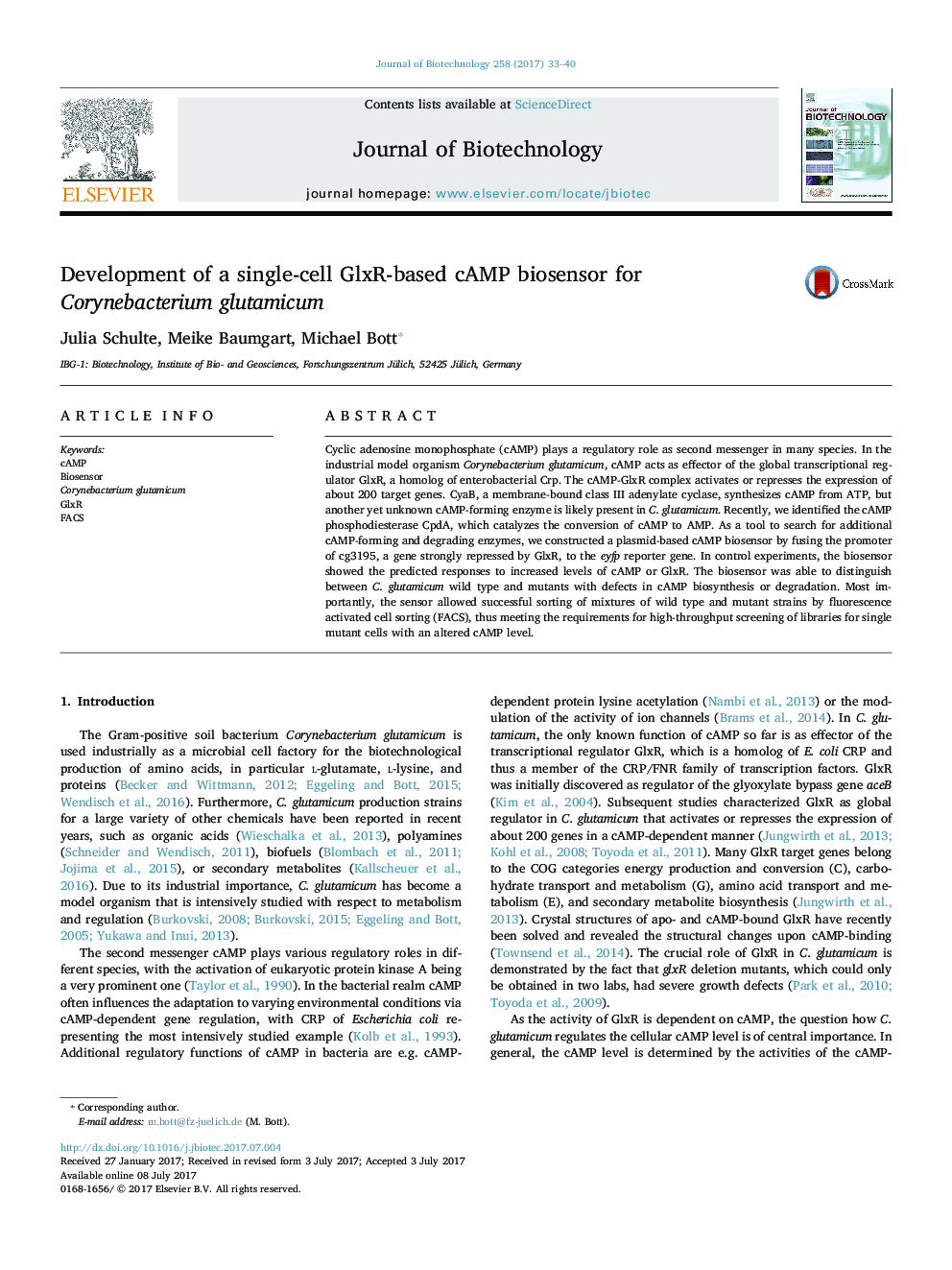| Article ID | Journal | Published Year | Pages | File Type |
|---|---|---|---|---|
| 6452016 | Journal of Biotechnology | 2017 | 8 Pages |
â¢The cg3195 promoter was used for cAMP biosensor construction in C. glutamicum.â¢The cAMP biosensor responds as expected to altered cAMP and GlxR levels.â¢Strains with different cAMP levels can be sorted using the biosensor and FACS.
Cyclic adenosine monophosphate (cAMP) plays a regulatory role as second messenger in many species. In the industrial model organism Corynebacterium glutamicum, cAMP acts as effector of the global transcriptional regulator GlxR, a homolog of enterobacterial Crp. The cAMP-GlxR complex activates or represses the expression of about 200 target genes. CyaB, a membrane-bound class III adenylate cyclase, synthesizes cAMP from ATP, but another yet unknown cAMP-forming enzyme is likely present in C. glutamicum. Recently, we identified the cAMP phosphodiesterase CpdA, which catalyzes the conversion of cAMP to AMP. As a tool to search for additional cAMP-forming and degrading enzymes, we constructed a plasmid-based cAMP biosensor by fusing the promoter of cg3195, a gene strongly repressed by GlxR, to the eyfp reporter gene. In control experiments, the biosensor showed the predicted responses to increased levels of cAMP or GlxR. The biosensor was able to distinguish between C. glutamicum wild type and mutants with defects in cAMP biosynthesis or degradation. Most importantly, the sensor allowed successful sorting of mixtures of wild type and mutant strains by fluorescence activated cell sorting (FACS), thus meeting the requirements for high-throughput screening of libraries for single mutant cells with an altered cAMP level.
Graphical abstractDownload high-res image (216KB)Download full-size image
